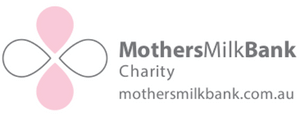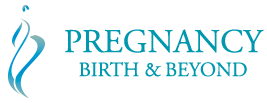Who might need to know how to obtain donor breast milk
With the proper support, most birthing parents can successfully breastfeed their babies.
Of course, there are still situations where parents need more milk, and as the Australian Breastfeeding Association states, breast milk from another mother is the best alternative.
Very sick or premature babies in hospitals sometimes receive donor milk. The hospital prescribes it and arranges its supply. However, there are many situations outside of the hospital when you might require extra human milk.
You might wonder how to get donor breast milk if:
- your baby came to you through adoption, surrogacy or fostering
- you cannot make enough milk
- you need medications that are not safe for your baby
- other physical or psychological reasons
For example, Adele, a mum participating in milk-sharing research, needed more milk when breastfeeding. ‘We needed my son’s weight gain to get up there so he could have the energy to learn how to nurse properly, and I needed to heal because my nipples were destroyed at that point,’ she explained.
How informal breast milk donation works
If you know someone who is lactating and has extra milk to share, your need to find donor breast milk might be complete. Most mothers feel more confident using a friend’s or family’s milk.
Further afield, Eats on Feets (think Meals on Wheels but for breast milk) is a worldwide network of groups for informal milk sharing. There is one for each state in Australia.
Eats on Feets believes that milk can be shared safely and families can make informed decisions about what to feed their babies.
 Another global network for donor breast milk is Human Milk 4 Human Babies (or HM4HB). Like Eats on Feets, each Australian state has a Facebook group.
Another global network for donor breast milk is Human Milk 4 Human Babies (or HM4HB). Like Eats on Feets, each Australian state has a Facebook group.
The most formal option available to the public in Australia is the Mother’s Milk Bank in Queensland. After registering your interest, a midwife talks with you about what help you require.
Alternatively, some lactation consultants and midwives connect local parents with breast milk donors across the country. They draw on their networks of known mums to source milk for clients.
While the Australian Breastfeeding Association is a tremendous support to breastfeeding parents, it doesn’t get involved in private donor milk sharing. Similarly, the international La Leche League does not allow its leaders to set up milk-sharing networks.

Is donor breast milk safe for my baby?
When feeding another woman’s milk to your baby, it’s natural to have concerns about the health, diet and medications used by the donating mother.
Milk banks associated with hospitals follow strict procedures to protect premature and ill babies they provide with milk.
They ask the mother questions about her health, take blood tests to check for disease, pasteurise (heat) the milk to kill germs and educate donors on the most hygienic way to pump, store and transport milk.
Eats on Feets takes a similar, but less formal, approach. It follows the four pillars of how to obtain donor breast milk safely:
- Informed choice – knowing your source well
- Donor screening – screening for certain diseases and honest communication about health issues
- Safe handling – clean hands and proper storage
- Home pasteurisation – heating the milk to kill germs.
How much does donor breast milk cost
 Neither Human Milk for Human Babies nor Eats on Feets allow the buying, selling or bartering of milk. However, both groups suggest recipients provide their donors with replacement milk bags.
Neither Human Milk for Human Babies nor Eats on Feets allow the buying, selling or bartering of milk. However, both groups suggest recipients provide their donors with replacement milk bags.
The Mother’s Milk Bank does sell breast milk. It charges $130 to $170 per litre and screens donors for health risks.
Wet nursing
Another long-used milk-sharing option is wet nursing, which means a nursing mother feeding another parent’s baby. It removes the need for pumping, storing and reheating milk because the baby feeds straight from the donor.
Wet nursing can be as infrequent as one friend feeding another’s baby while she attends an appointment. Or it could be a more regular arrangement.
If you use milk sharing to feed your little one, it’s incredible to know that the generosity of others is helping your baby grow. You never know what life holds in store: in the future, you may be in a position to return the favour and donate your milk to other mums.
Reference List
PBB aims to keep you informed with the latest research-based information. Check out our reference list used in the creation of this article.
Published 11th January 2023



Recent Comments